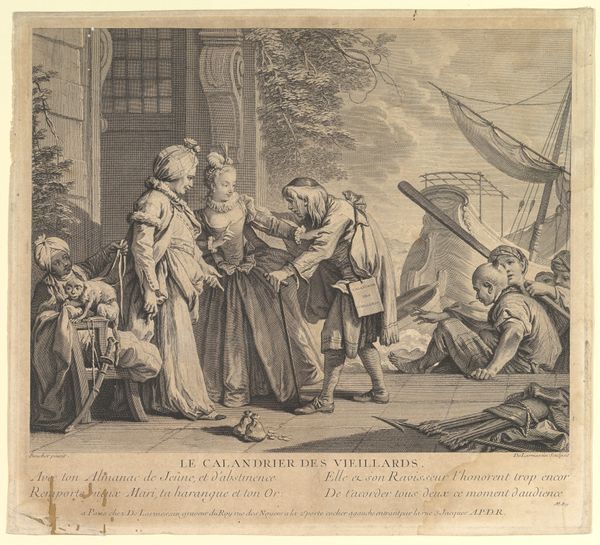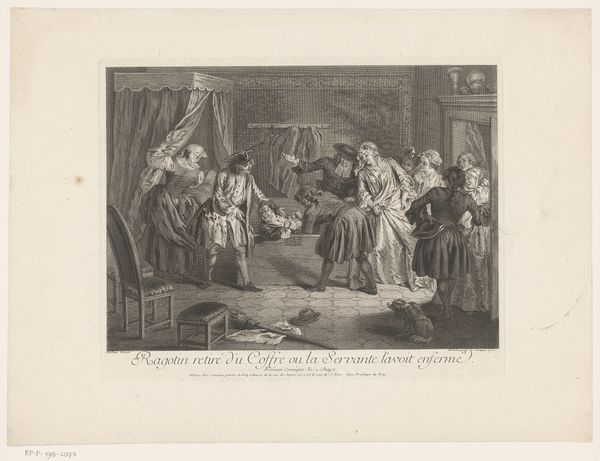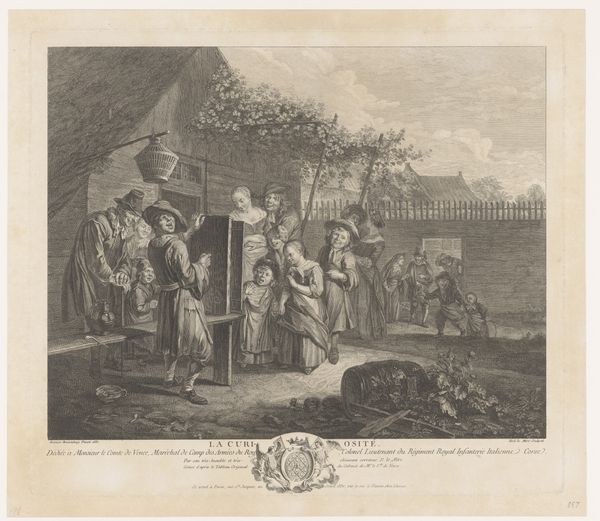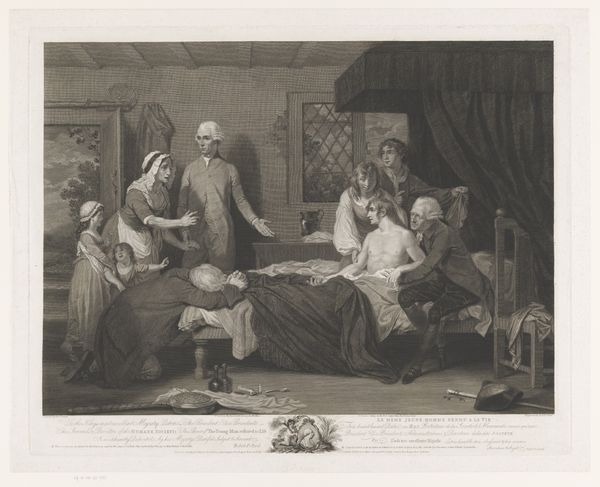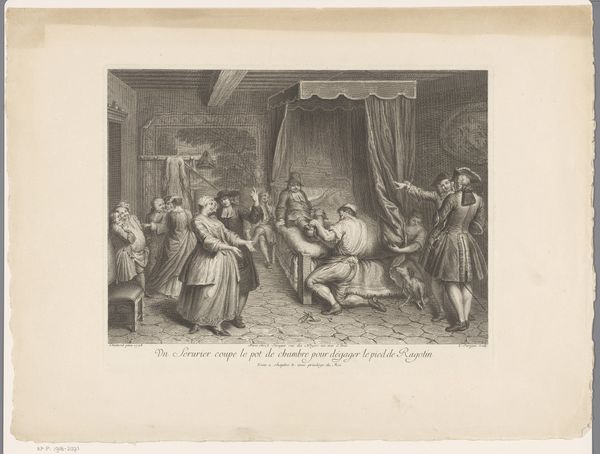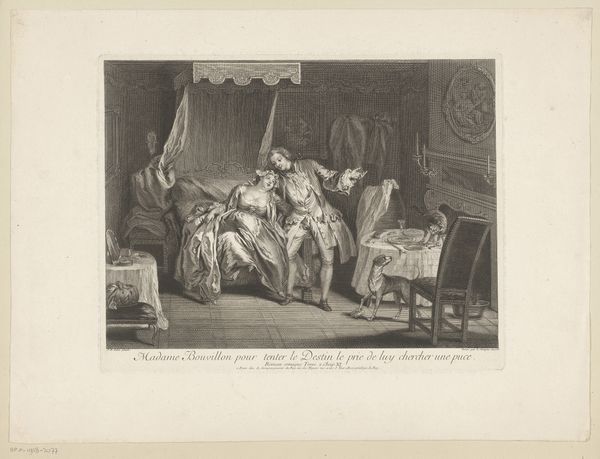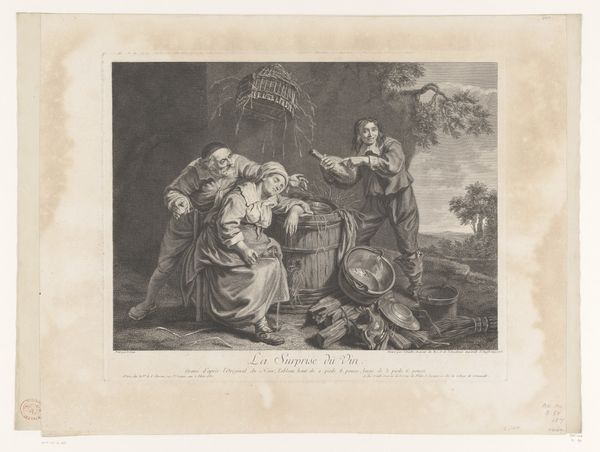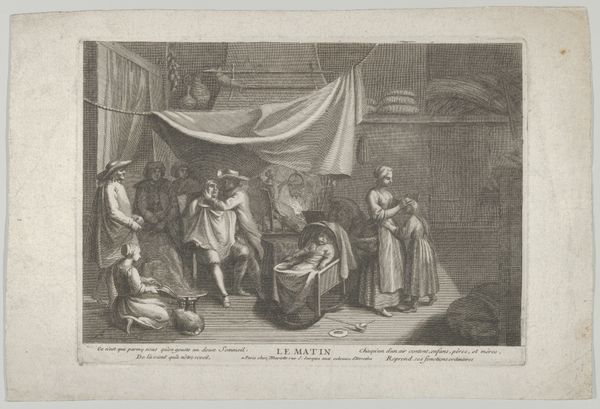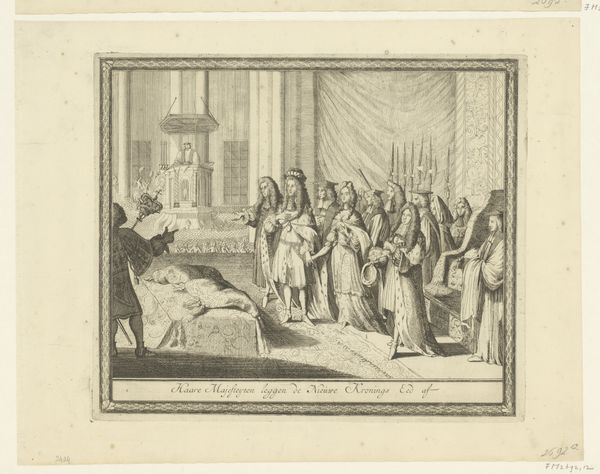
print, etching, engraving
#
narrative-art
#
baroque
# print
#
etching
#
genre-painting
#
engraving
Dimensions: height 324 mm, width 360 mm
Copyright: Rijks Museum: Open Domain
Curator: So, we're looking at "Vrouw verkiest een piraat boven haar oude echtgenoot," or "Woman prefers a pirate over her old husband," an engraving and etching by Nicolas de Larmessin the Third from around 1742. It’s a genre scene, quite satirical from my point of view. Editor: Yes, the composition and the title itself seem rather loaded. What strikes me most is the contrast between the apparent wealth and age of the husband figure and the rugged, exotic appeal of the pirate. What can you tell me about the historical context that shaped its imagery? Curator: Consider the sociopolitical structures of 18th century Europe, especially the roles and expectations of women and marriage within those hierarchies. How would societal perceptions of power and class dynamics influence an audience's reading of the scene? Think of marriage as a social contract, not just a love match. Larmessin is speaking to this with a cynical whisper, would you agree? Editor: I see, it challenges that contract. This etching then seems to offer a commentary on arranged marriages and the limited agency women had in those situations. The 'pirate', though a somewhat dubious figure, could be viewed as symbolizing freedom or rebellion. How did the art world receive such subversive pieces at that time? Curator: Reception was likely varied, depending on the circles the print circulated in. Privately, satirical works like this would likely be consumed with amusement. More formally, did such depictions serve as safe, performative avenues for the acknowledgement and contestation of social issues? Were they taken as cautionary tales, rather than genuine promotion of such ideals? Editor: That’s a great point. It allows a subtle but undeniable commentary on societal norms and expectations, packaged in art for distribution. I’m realizing that even a seemingly straightforward image holds layers of meaning tied to social dynamics. Curator: Exactly! These prints became important vehicles for shaping public opinion and understanding the power relations that affected everyday life, revealing tensions of that moment. Editor: I appreciate learning how the artist plays with social and historical dynamics in this baroque print.
Comments
No comments
Be the first to comment and join the conversation on the ultimate creative platform.
